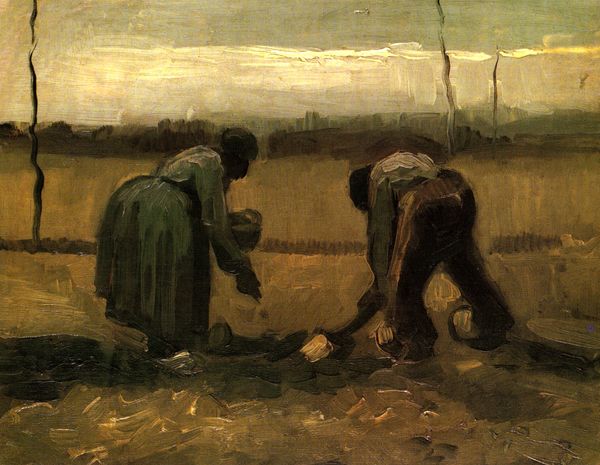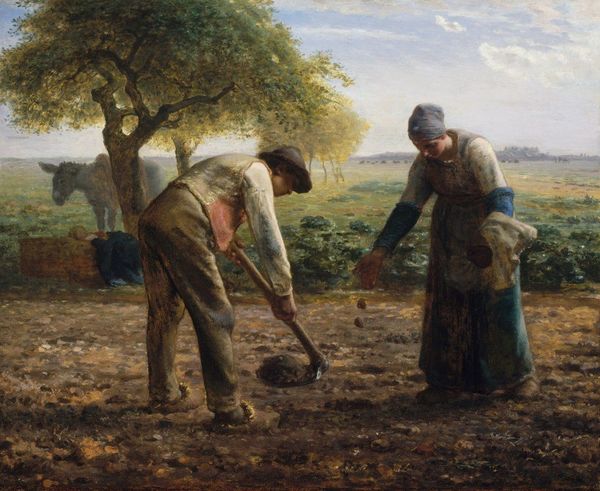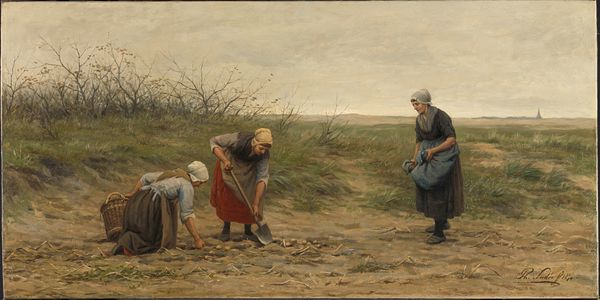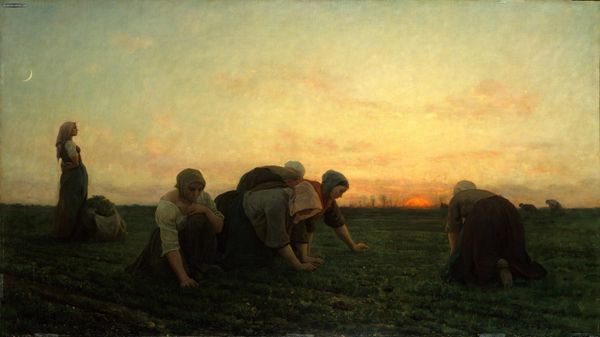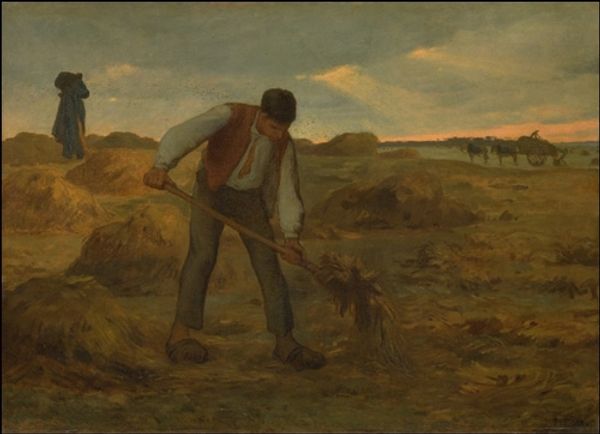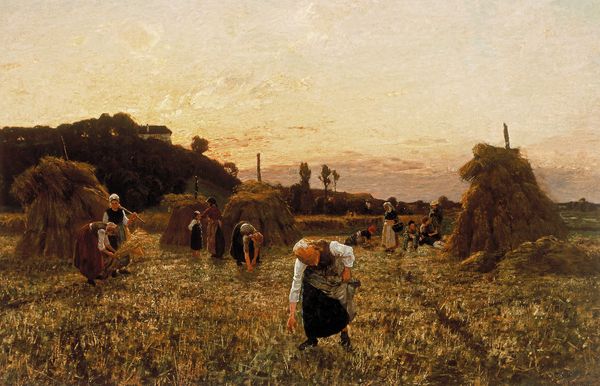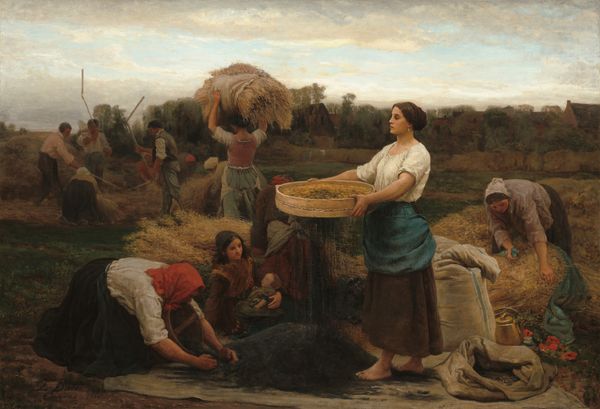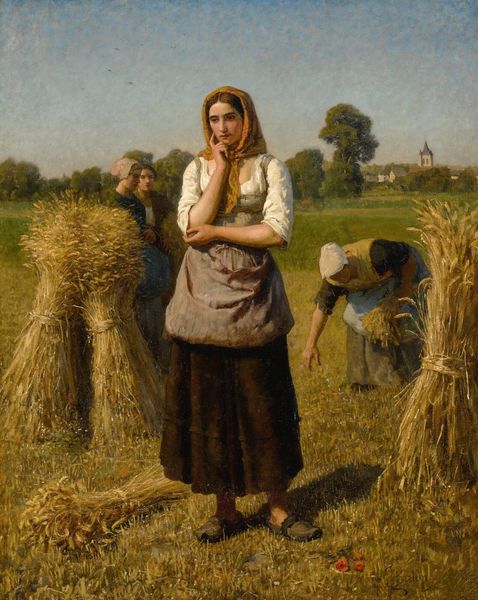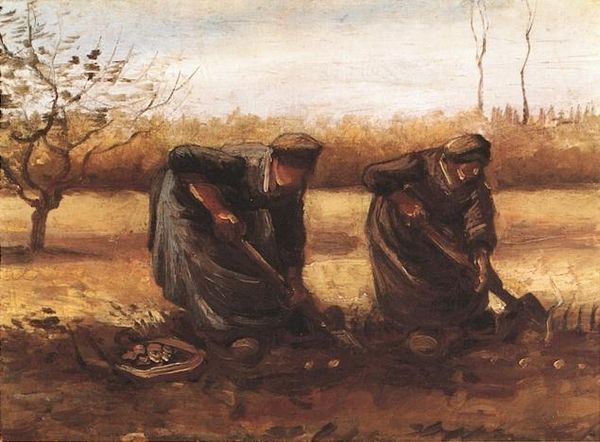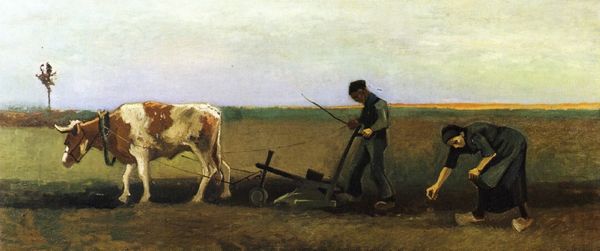
painting, oil-paint
#
figurative
#
painting
#
oil-paint
#
landscape
#
figuration
#
social-realism
#
underpainting
#
romanticism
#
genre-painting
#
realism
Copyright: Public Domain: Artvee
Jean-François Millet painted The Gleaners in France sometime in the 1850s. It shows three peasant women gathering leftover grains from a field after the harvest. In 19th-century rural France, gleaning was a practice that allowed the poor to collect what remained after the landowners had taken their share. Millet’s choice of subject matter was socially charged. France had only recently been through a revolution, and the divide between the wealthy and the poor was a contentious issue. The composition directs us to associate the women with the land. They seem worn and weathered, but also strong. By depicting the gleaners with such dignity, Millet challenged the romanticized and idealized images of peasant life that were common at the time. To better understand this artwork, research into the social and economic conditions of rural France in the mid-19th century would be helpful. We must consider the prevailing attitudes towards poverty and labor, as well as the role of the art world in shaping public perceptions of these issues.
Comments
No comments
Be the first to comment and join the conversation on the ultimate creative platform.
